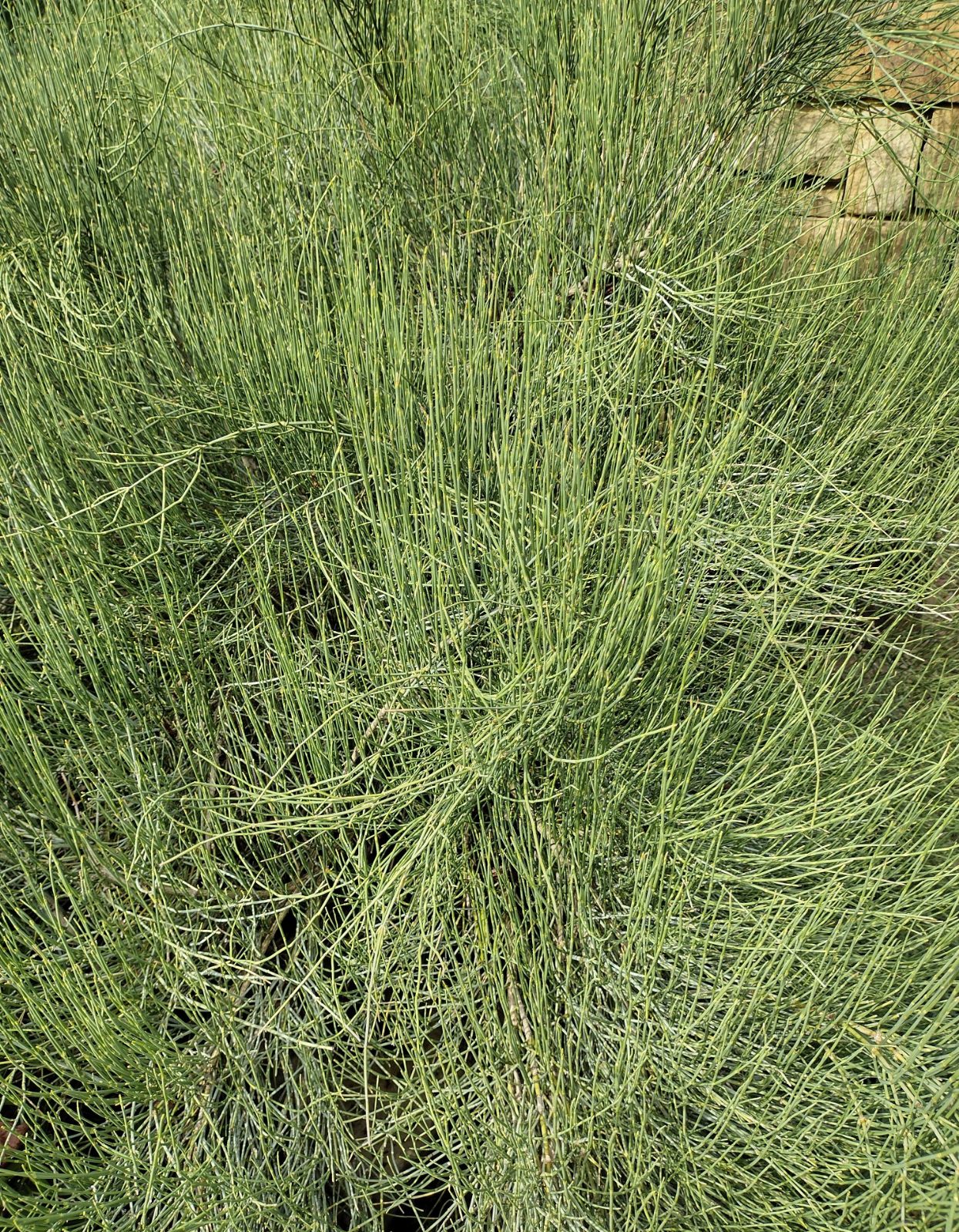Ephedra
Credits
Article from Bean's Trees and Shrubs Hardy in the British Isles
Recommended citation
'Ephedra' from the website Trees and Shrubs Online (treesandshrubsonline.
Family
- Ephedraceae
A group of curious shrubs, sometimes climbing, with a mode of growth and branching resembling that of horse-tail (Equisetum). They have little garden value, and are rarely seen except in scientific collections. The older parts of the plants are truly woody, the younger parts very pithy; the branchlets slenderly cylindrical, rush-like, dark or greyish green, minutely ribbed, opposite or borne in whorls, very tough and flexible, but snapping at the joints. The joints (nodes) are clasped by small membranous sheaths which sometimes develop a pair of leaf-like blades, usually 1⁄8 to 1⁄4 in. long. The flowers are unisexual, the sexes usually on separate plants, the males being borne on short spikes from the joints, each flower consisting of two opposite membranous sepals and two to eight anthers, which are borne at the top of one central stalk formed by the union of their stalks. The female flower is composed of a naked ovule prolonged at the top into a style-like tube and enclosed in a bag-like calyx or bract, which in the fruiting stage becomes fleshy, red and often sweet and edible.
In cultivation out-of-doors, so far as I have seen, they do not flower profusely or regularly in this country; still less frequently do they bear fruit. The best crop of blossom I have seen was in the early summer of 1912, this being due presumably to the ripening influences of the unusually hot summer of 1911. The flowers are yellow, but have little beauty.
The ephedras, which in the vegetable kingdom make a connecting link between ordinary flowering plants and conifers, usually inhabit dry, inhospitable regions. Under cultivation they need a well-drained, loamy soil and a sunny spot. They are propagated by seeds and layers and by division. Such species as E. distachya, E. gerardiana, and E. major make evergreen patches, interesting in the garden as being absolutely distinct from any other hardy shrubs. The identification of the species is a difficult botanical study, and a brief general description of a few of the commoner species only can be given here.
E. andina C. A. Mey. E. americana var. andina (C. A. Mey.) Stapf – A more or less prostrate, much-branched shrub. Branchlets slender, clustered, with the internodes 1⁄4 to 11⁄4 in. long. Male flower-spikes solitary or grouped, on short side-branchlets, to 3⁄5 in. long. Fruits broadly egg-shaped, about 3⁄5 in. long, bright red. Native of the Andes; it is in cultivation from Comber’s seed, collected in 1926, but the plant figured in Bot. Mag., n.s., t. 142, was introduced to the Cambridge Botanic Garden in 1899.
E. distachya L. – A shrub variable in height up to 3 or 4 ft, the branchlets rather rigid, with the joints 1⁄2 to 2 in. apart. Leaves 1⁄12 in. long. Male flower-spike usually solitary; female flowers in pairs. Fruit globose, 1⁄4 in. long, red. Native of S. and E. Europe; cultivated in the sixteenth century. Var. monostachya (L.) Stapf has solitary female flowers.
E. gerardiana Stapf – A densely furnished shrub, often very dwarf (2 or 3 in. high) in a wild state, but up to 2 ft high in cultivation, forming a spreading close mass. Branchlets slender, erect, with the joints 3⁄4 to 1 in. apart. Male flowers yellow, in a globose or ovate spike 1⁄6 in. long. Fruit globose, 1⁄4 in. long, red. Native of the Himalaya, the Pamirs, Yarkand, Tibet, etc.
E. intermedia C. A. Mey. – An erect shrub about 3 ft high, branchlets roughish, with the joints 11⁄2 to 21⁄2 in. apart. Flowers of both sexes often on the same plant. Fruit red, globose, 1⁄4 in. long. Native of Central Asia. Distinguished from the others here mentioned by the stouter branchlets and longer internodes.
e. major Host E. nebrodensis Tineo – A shrub sometimes 3 ft or more high, the lower branches prostrate; branchlets with the slightly thickened joints 1⁄2 to 1 in. apart. Male flower-spikes solitary, or two or three together; female solitary. Fruit red, rarely yellow, globose, 1⁄4 in. long. Native of the Mediterranean region, N. Africa, and Canary Islands. It occurs along the coast of Dalmatia, and I have seen it making very charming evergreen patches at Spalato (Split), on the walls of Diocletian’s palace, also in the vicinity of Ragusa (Dubrovnik).

